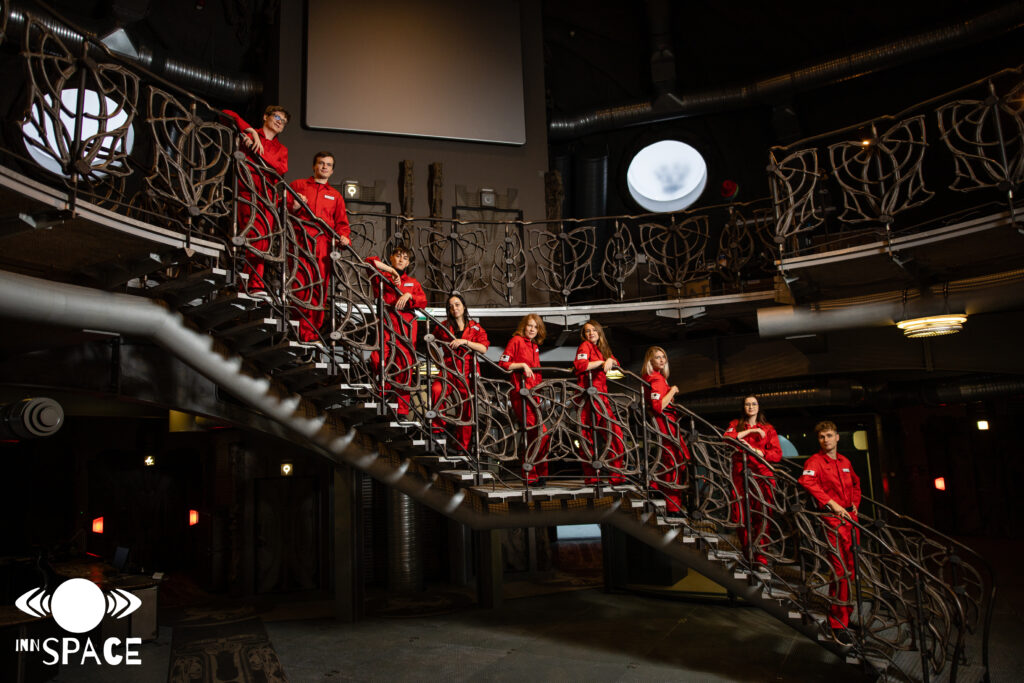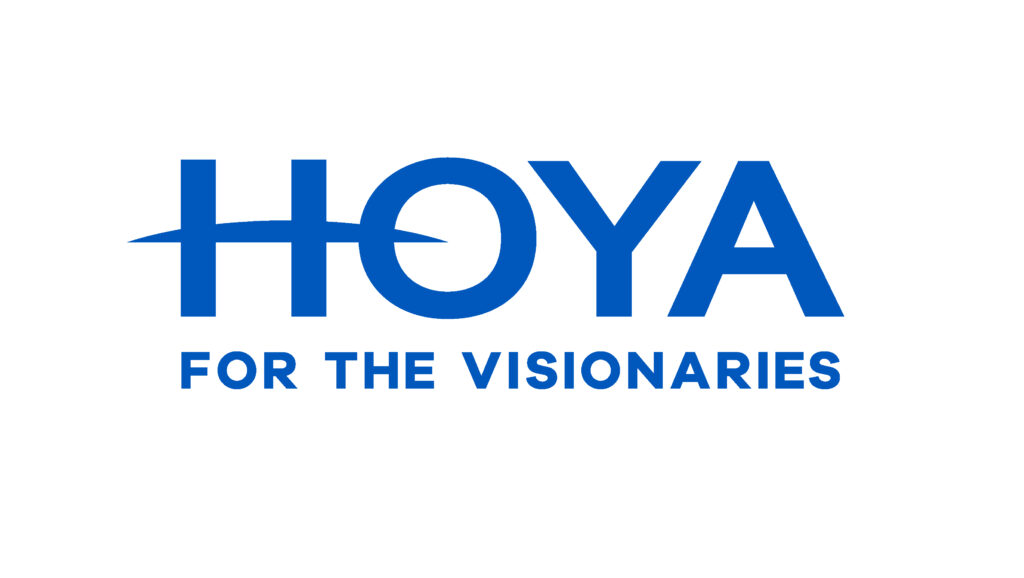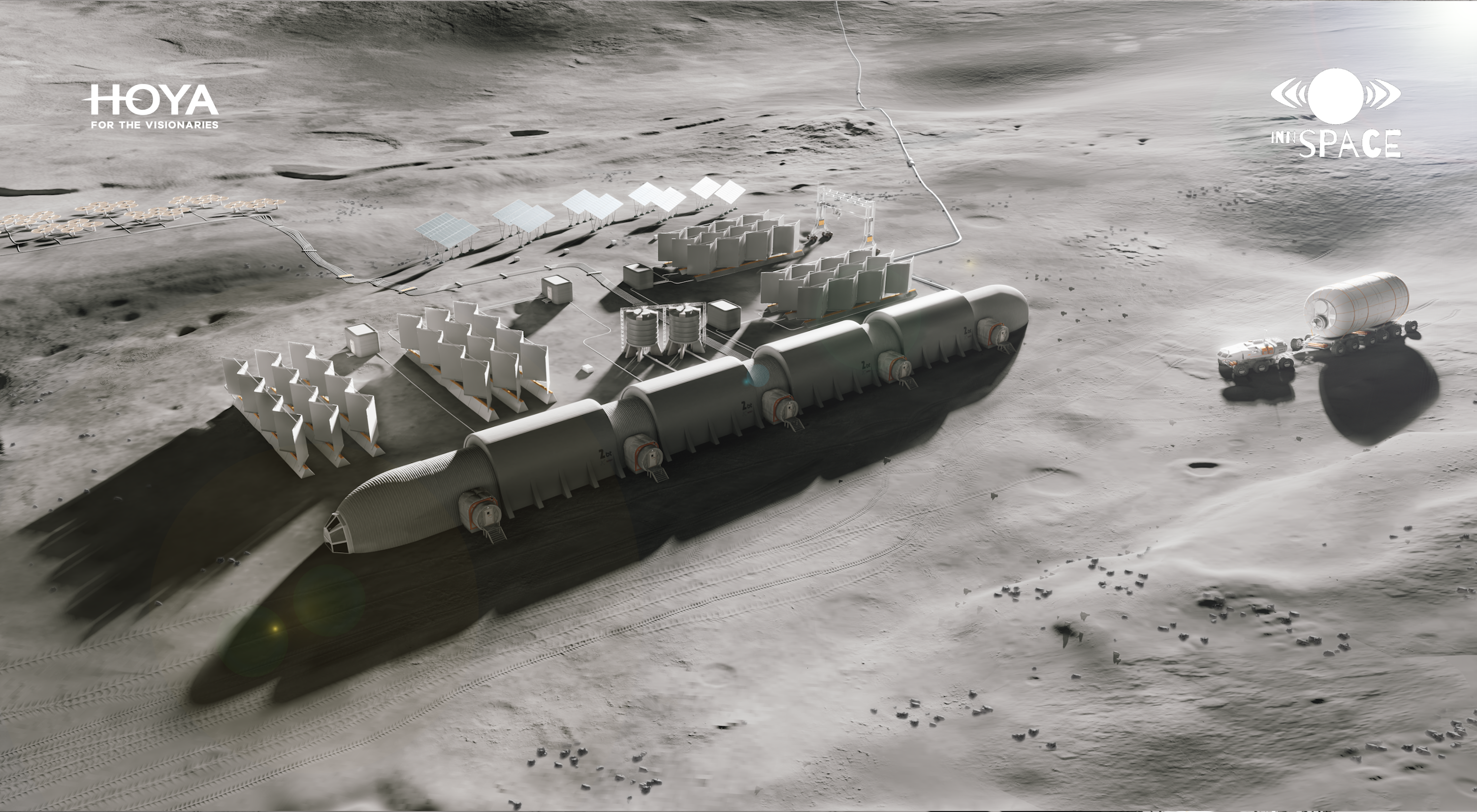
The press release and materials related to the project can be found at this link.
The project was supported by Hoya Lens Poland.
Moon base project won 4th place
The Innspace team won 4th place in the Moon Base Design Contest. Their project is a base on the Moon, made using 3D printing, in which the main role is played by… algae.
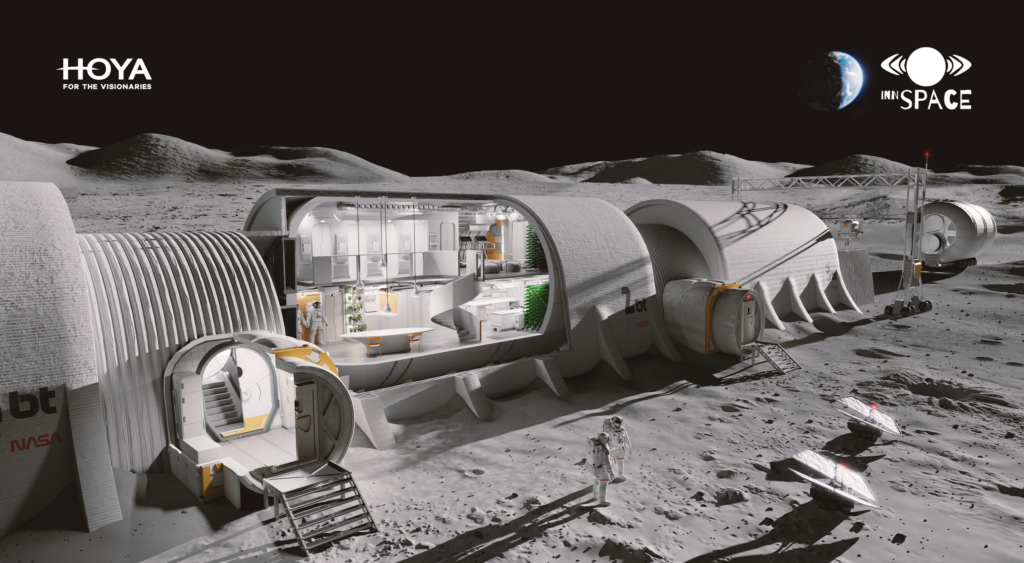
Lunar outpost
The competition was organized by the Moon Society, based in the US. They invited teams from around the world to design a lunar habitat that is buildable within the next decade and accommodates 2-3 crews at a time.
The fourth place was awarded to the project prepared by a Polish group Innspace, which has a history of successes in other competitions related to space architecture. They won the title of Gold Winner in the Future Mars Life competition in China, or 5th place in the Mars Colony Prize competition in the USA.
Experience as astronauts
Five crew members took part in the longest analog space mission in Poland, organized by Analog Astronaut Training Center, spending 6 weeks in the habitat. So some of the solutions were inspired by their own thoughts.
“Our team has unique skills. Not only we have in our group specialists from 14 different fields, such as architecture, robotics, medicine or even law, but also a significant part of our members have experience as analog astronauts. So we try to take advantage of the interdisciplinary background and the stay on the mission during the implementation of our projects.” – says Justyna Pelc, Innspace group leader.
Base at the pole
The group chose a site near Shackleton Crater, located at the south pole, as the location for the habitat. This is one of the most interesting places on the Moon, because there are places that are illuminated by the Sun almost all the time, as well as places where light never reaches. This makes the location particularly interesting to scientists.
This is not the only reason for choosing this particular site. Thanks to its location at the South Pole, the habitat gains access to water that is trapped in the form of ice on, as well as under, the lunar surface.
17 preparatory flights
The Xors base consists of 4 modules, inspired by Bigelow’s solution tested on the International Space Station. The modules would be covered with a thick layer of lunar regolith using 3D printing technology, providing additional protection from radiation. Building such a base for a dozen astronauts requires preparatory missions. As many as 17 flights are required to transport the necessary resources and equipment.
“The most important part in lunar base projects are the life support systems and the systems responsible for the base’s safety,” point out Ewa Borowska and Magdalena Łabowska, who were responsible for the environmental part. “The most difficult aspect was to design the safety systems to ensure the protection and proper operation of each of the life support systems under all conditions, even in emergency situations.”

Use of algae
An important component of life support systems is algae. A mix of specially selected microorganisms, including bacteria, cyanobacteria and microalgae, perform the functions of treating wastewater and other waterborne pollutants. Additionally, specially selected microalgae in the form of wall-mounted panels in each room provide additional oxygen and would perform visual functions. For this, the team used lamps that emit not only visible light, but also infrared and UV-A and UV-B light to better mimic sunlight.
“The proper light is of extreme importance. The technology we have chosen will have a positive impact on the astronauts’ well-being, plus they will get less tired.” – says Beata Suścicka, architect in the Innspace group.
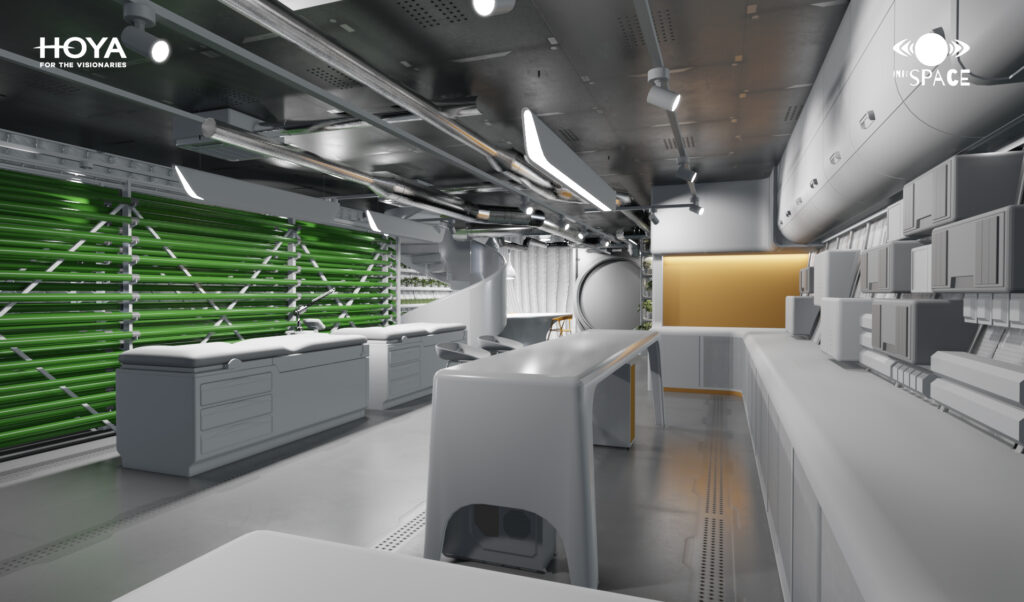
The next step - Venus?
This is not the last project of the Innspace group. They have started work on a base on Venus, which could float at an appropriate height in the atmosphere, protecting astronauts from the high temperatures prevailing on the surface of this planet (reaching up to 400 degrees Celsius).
“We want to step outside our comfort zone and see how feasible plans are to build a hovering base on Venus. The concept was very popular a few decades ago, and technology has advanced a lot since then.” – says Hubert Gross, constructor.
The Innspace team consists of Justyna Pelc, Piotr Torchała, Magdalena Łabowska, Beata Suścicka, Łukasz Sokołowski, Małgorzata Popiel, Hubert Gross, Arkadiusz Kołodziej, Ewa Borowska, Aleksandra Wilczyńska, Michał Garus, Cyrus Sidor and Marcin Zieliński.
